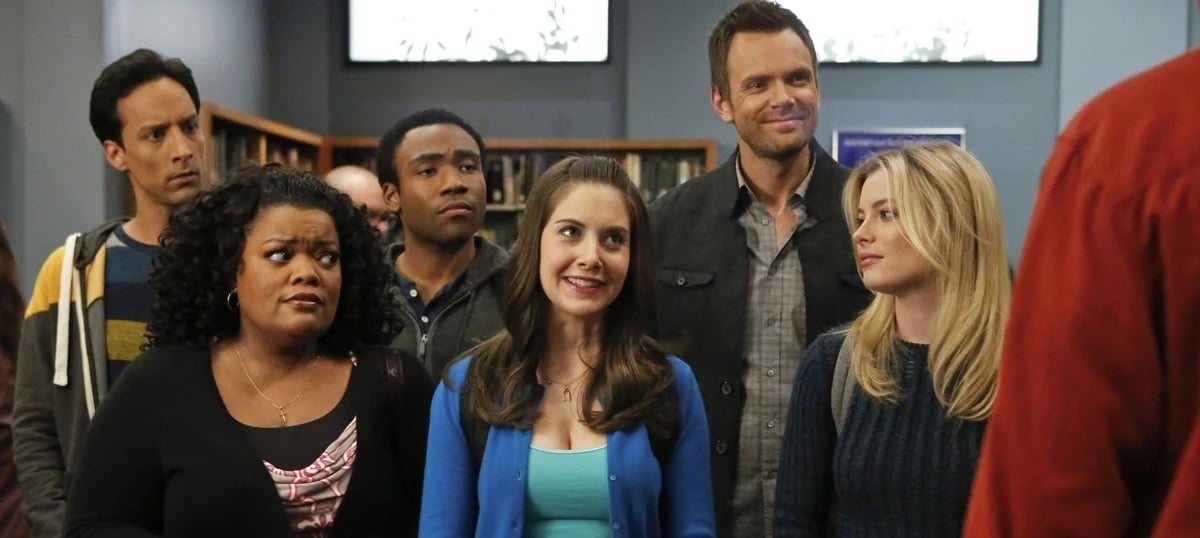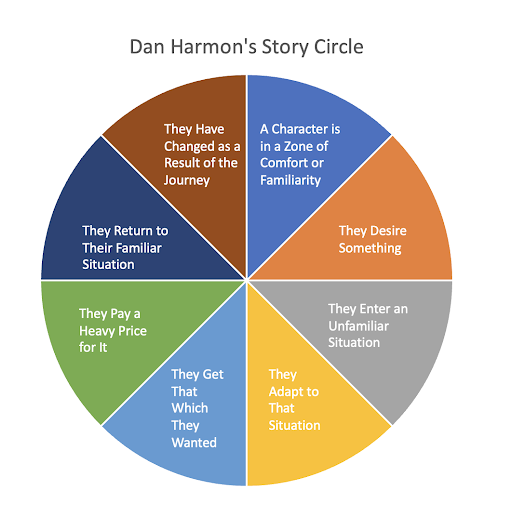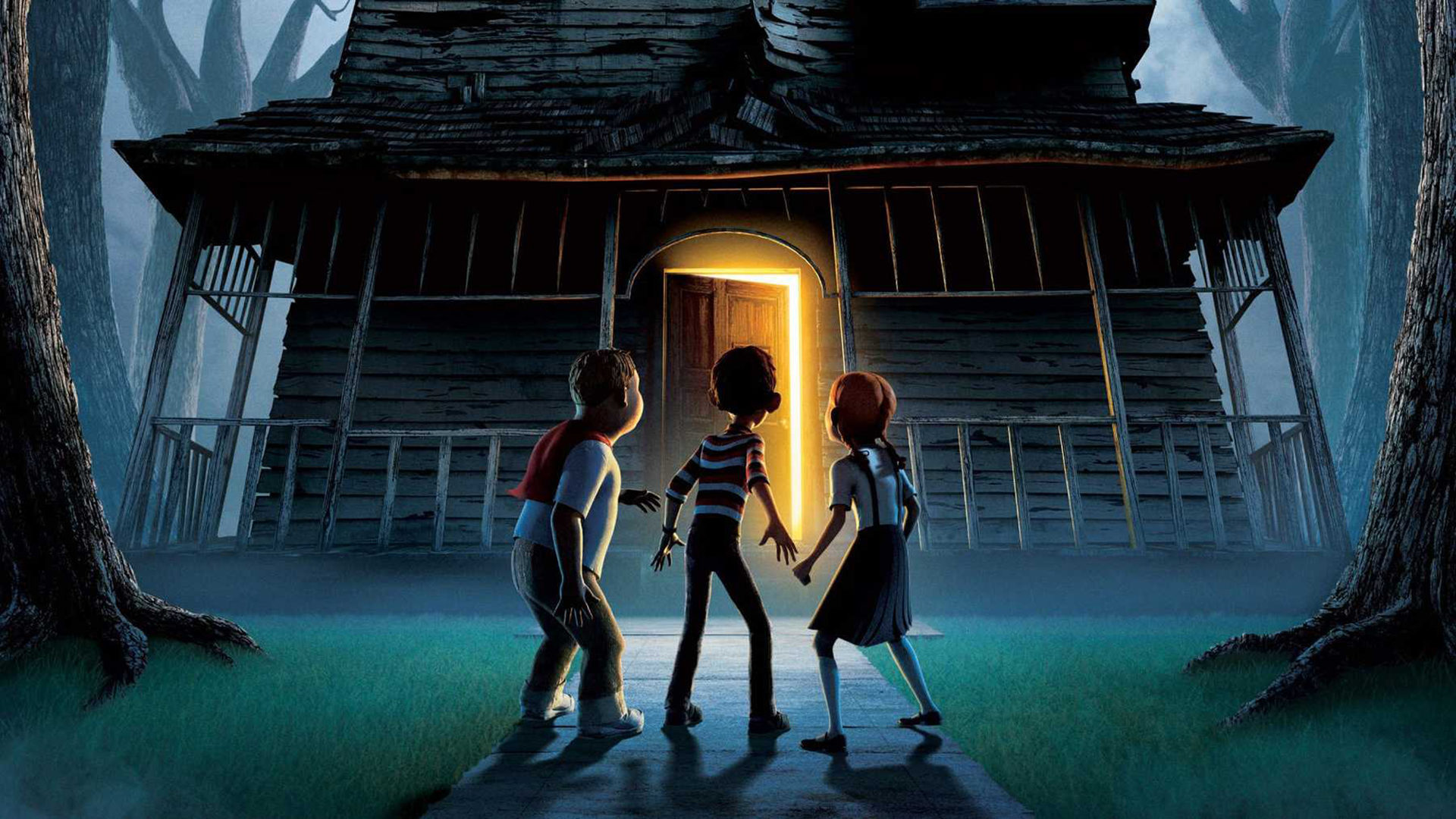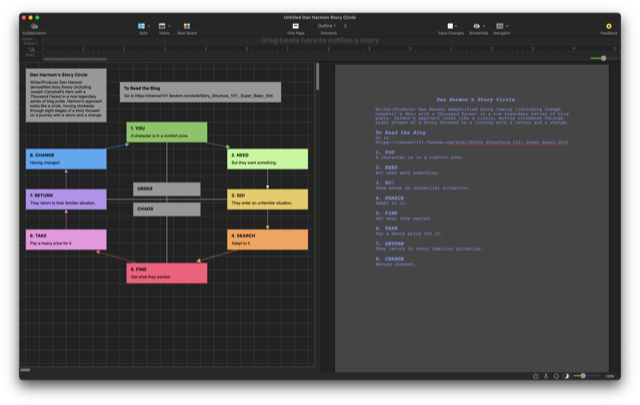How to Harness Dan Harmon's Story Circle to Tell Better Stories
June 13, 2023
Loosely based on / inspired by the Hero's Journey story structure, Dan Harmon's Story Circle has gained a sizable following in recent years, particularly among writers of episodic television. But even feature script writers can benefit from using this simplified approach.
Before delving into the specifics of Harmon's method, it's probably helpful to provide some background info, for those starting from scratch:
Who is Dan Harmon?
Television series writer and producer Dan Harmon is best known for co-writing the Oscar-nominated feature Monster House, creating the TV sitcom Community and co-creating the hit Adult Swim animated series Rick and Morty.
In his early years as a comedy writer for The Sarah Silverman Program and other projects, he desired to create a story template for episodic TV that was easy to understand and structure.
He turned to the Hero's Journey paradigm derived from mythology by Joseph Campbell, and developed into its modern incarnation by Chris Vogler. Harmon considerably simplified, streamlined and modernized this ancient storytelling design for half-hour series TV, and voila: the Story Circle was born.
Read More: The 12 Stages of the Screenwriter's Journey

The Hero's Journey
The two major approaches to creating a story for the screen are both derived from methods that stretch back centuries (if not millennia): the traditional 3-Act Structure adapted from the stage, and the Hero's Journey, a blend of patterns that literature professor Joseph Campbell identified in myth and folklore, interpreted through a lens of Jungian psychological theories and archetypes. (Side-note: Campbell never called his theory "the Hero's Journey," he called it "the Monomyth." Quiz question!)
Where the 3-Act Structure is generally linear, and often mapped as occurring on a straight line from beginning to end, the Hero's Journey is cyclical, usually mapped as a circle, where the story moves clockwise around the circle through certain beats from beginning to end.
This is why Harmon's Story Circle is, well, a circle — it's more Hero's Journey-derived. (I've seen a story structure expressed as a triangle once. And I've never been able to find it, but I swear I encountered someone using a parallelogram in the late '90s. It was a different time, children. Let's not go there.)
Read More: How Long Should Your Feature Script Be (and Why)?
Pie. Delicious, Delicious Pie.
Harmon eschewed a lot of the extraneous in his adaptation — because, let's face it, epic monomythic characters and life-and-death level beats aren't going to work in a half-hour sitcom script, and that's mostly what the Story Circle was created to empower.
Dan Harmon's Story Circle is basically…a trivial pursuit pie. (Officially, I think Hasbro calls the "pie" a "playing piece" and the "slices" are "wedges," but I feel that was a hugely missed opportunity. They paid $80 million for the game so they can call it whatever they want but…pie. PIE.)
Gathers thoughts…
Drumroll, please, here it is:

While the generally accepted Campbell/Vogler Hero's Journey has 12 steps, Harmon has broken it down into 8 simpler steps:
- Slice #1: A Character is in a Zone of Comfort and Familiarity. The protagonist has become accustomed to a normal life where they feel like they're in control. I would add: but they aren't. There's something off about this life.
- Slice #2: They Desire Something. The protagonist comes to want something they think will make their life better — but to get it, they have to leave their zone of comfort and familiarity.
- Slice #3: They Enter an Unfamiliar Situation. To get what they want, the hero or heroine must enter into a situation where they are no longer in control. They're a "fish out of water."
- Slice #4: They Adapt to That Situation. The protagonist does what we'd all do in this scenario: they try to make it work. They're in a new world but they try to master it, but there are pressures on them to get it, master it, figure it out.
- Slice #5 They Get That Which They Wanted. At the midpoint of the story, the protagonist seemingly gets the thing they wanted, but not so much. They won — but did they, really?
- Slice #6: They Pay a Heavy Price for It. Getting what they wanted extracts a painful toll on the protagonist in some way — they may have won, but they've also lost in some way that's significant.
- Slice #7: They Return to Their Familiar Situation. Returning to that zone of comfort and familiarity from the beginning of the story, they try to reestablish that status quo from the beginning. They're retreating to safety.
- Slice #8: They Have Changed as a Result of the Journey. Problem is: they've changed too much as a result of this journey. That may result in their life being reestablished in a better way or, in a tragic story, things are better in some ways but worse in others.

TV vs. Movies
This method is widely regarded as being more TV episode-oriented, and that's not wrong: Dan Harmon developed it originally as a way to structure comedic TV episodes. His track record would suggest that it works extraordinarily well, feuds with Chevy Chase notwithstanding (Google it, the problem is…uh, not the Story Circle).
Here's the thing, though. I am a feature script 8-Sequence Approach teacher in my regular, non-blogging life. And Dan Harmon's Story Circle aligns pretty much exactly with the 8 sequences.
- Act I (Sequences A & B) = Slices 1 & 2.
- Act II Part One (Sequences C & D) = Slices 3 & 4.
- Act II Part Two (Sequences E & F) - Slices 5 & 6.
- Act III (Sequences G & H) = Slices 7 & 8.
Read More: 8 Sequence Structure: The Best Kept Screenwriting Secret
We could do the same thing with "Save the Cat" and any number of other storytelling approaches here. Why? Because they're all really the same thing.
Hero's Journey? 3 Acts? Linear? Circular? Triangular (okay not that one). All pretty much the same.

Where to find it in Final Draft
Dan Harmon's Story Circle is incorporated into the Final Draft software. That means you can use this model to sketch things out before you start writing your script. Final Draft 12 also has structures for Chris Vogler's The Writer's Journey, "Save the Cat" and one for "Acts & Sequences." You can find them by going to File > New from Template > Structure.
The principles of telling a story are universal and apply no matter what approach you're taking. The bad news? They're kind of all the same. The good news? They're kind of all the same. Dan Harmon's Story Circle works. So does the Hero's Journey, from which it was birthed, except in an easier-to-digest form. So do 3 Acts. So do 8 Sequences. If you've got the fundamentals down and a super-compelling story, they're all going to work. And if you don't? Next time!
Wait. What?
Oh my God, this story circle / pie could also be a pizza. A pizza is technically an open-faced pie. MIND. BLOWN. Send help. Or pizza. (I like a deluxe with anchovies, well-done, square-cut. And I raised a Hawaiian pizza lover. Because we're from Hollyweird. Deal with it.)
Written by: Karl Williams
Karl Williams is a screenwriting instructor at Scottsdale Community College in Arizona. He has won the Comedy and Sci-Fi Awards at the Austin Film Festival and the Jack Nicholson Prize for Excellence in Screenwriting at UCLA, where he earned his MFA.- Topics:
- Discussing TV & Film




